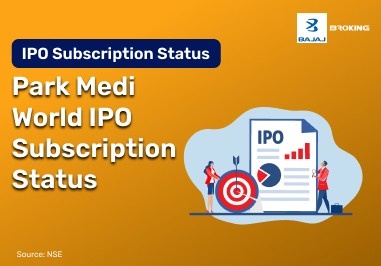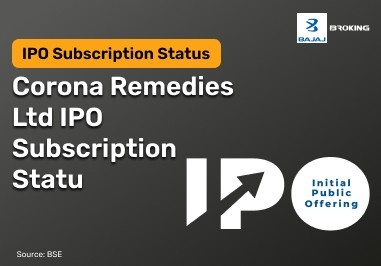In options trading, the expiration date is one of the most important things to understand. It’s the last day your option remains valid. After this date, the contract expires and you can no longer trade or exercise it. If not acted upon in time, the option becomes worthless.
Options in India are available on stocks, indices, currency pairs, and even commodities. Whether you're trading Nifty 50, Reliance, USD/INR, or gold options, all of them come with an expiry date that decides how long your position stays active.
An option gives you the right—but not the obligation—to buy or sell the underlying asset at a set price before expiry. As expiry approaches, the option begins to lose value more quickly. This happens due to time decay, which reduces the portion of the premium tied to time.
The closer you get to the expiration date, the less time the market has to move in your favour. That’s why both time left and price behaviour matter when choosing an option. Options come with different expiry types—weekly, monthly, or longer-term—and selecting the right one can help match your strategy, timeline, and risk. That’s why understanding options expiration dates is important.
Types of Options by Expiration Date
If you are new to options, you might be wondering ‘when do options expire?’ Well, that depends on the type of option in question:
Zero-Day Options
These expire on the same day they're traded. They're high-risk and suitable for experienced traders. India does not currently have zero-day options.
Weekly Options
These expire every week, typically on Tuesdays or Thursdays, depending on the exchange. They're popular for short-term trading strategies.
Monthly Options
Standard options that expire on the last Thursday of the month. If last Thursday is a holiday, the expiry moves to the previous trading day.
Quarterly Options
These expire at the end of each financial quarter. They're often used for hedging quarterly financial results.
LEAPS (Long-Term Equity Anticipation Securities)
These have expiration dates up to three years in the future. They're suitable for long-term investment strategies.
Monthly Options Contract Expiry
Monthly options are widely traded in India. In India, options contracts typically expire on the last Thursday of each month. If that day is a trading holiday, the expiry shifts to the previous trading day.
Monthly contracts offer:
Predictability
You always know when the expiry happens, which helps with planning your trading strategies.
Liquidity
Since monthly contracts have been around longer, they usually have more buyers and sellers. This makes it easier for you to enter or exit trades.
Variety
Monthly options are available on many stocks, indices like Nifty and Bank Nifty, and even ETFs.
Slower time decay
Compared to weekly options, premium erosion is slower, giving you a little more breathing room.
Strategic planning
The longer duration gives you more flexibility to use different trading strategies based on your market view.
If you’re building positions around earnings, macro events, or trends, monthly contracts can fit well into your plan.
Weekly Options Contract Expiry
Weekly options expire on a particular day of the week. In March 2025, NSE announced that it will be changing the weekly expiry day for Nifty 50 to Mondays , however, this was put on hold later. It has sought approval from SEBI for weekly expiries on Tuesdays. Currently, BSE offers weekly expiry for Sensex on Tuesdays and NSE offers weekly expiries on Thursdays. Weekly contracts on other indices like Bank Nifty and BANKEX have been discontinued.
Here’s what makes weekly options unique:
Flexibility
You can plan trades around events like RBI policy updates, company earnings, or global news.
Lower premiums
Weekly contracts usually cost less than monthly ones, so they’re easier to access, even with a smaller trading budget.
Faster time decay
Premiums drop quicker the closer you get to expiry. This can work for or against you, depending on your position.
Quick turnaround
You can open and close positions within days. This speed helps if you're using short-term trading strategies or hedging quickly.
Weekly expiries are especially useful if you’re dealing in Call and Put Options to take advantage of immediate price moves. Just remember, they carry more volatility, so timing and execution matter.
Daily Options Contract Expiry
In India, daily expiring options – often called same-day expiry or 0DTE (Zero Days to Expiry) – are not officially offered yet. These options contracts are more common in the American market and are favoured due to the following reasons:
High liquidity
On expiry day, volumes surge. This gives you better price fills and tighter bid-ask spreads.
Rapid time decay
Options lose value very fast during the day. If you're holding OTM positions, they can become worthless by the end of the session.
Volatility spikes
Any market-moving news or sharp index movement can quickly affect prices.
Short-term hedging
Some traders use expiry-day trades to manage risk or adjust existing positions quickly.
Valuing Options at Expiration
At expiration, an option’s value comes down to just one thing—its intrinsic value. The time value, which you might have seen in the premium earlier, is now completely gone. That’s because time value is based on market expectations about future movement, and once the contract reaches expiry, there’s no future left to price in.
So how is intrinsic value calculated? For a call option, it’s the difference between the market price of the stock and the strike price—only if the stock is trading higher than the strike. If the stock is below the strike, your call option has no intrinsic value and expires worthless. For a put option, it’s the other way around. You subtract the market price from the strike price. If the stock is trading lower than the strike, the put is in the money.
At expiry, if your option is in the money, you can either exercise it or sell it for its remaining value. If it’s out of the money, it expires worthless. There’s no middle ground. That’s why it’s important to understand how options are valued at expiration—so you can decide what to do with them before time runs out.
What Happens When an ITM Option Expires?
When an ITM (In-the-Money) option expires, it’s usually exercised automatically by the exchange or clearinghouse. For a call option, this means you get to buy the stock at the strike price, which is lower than the market price. For a put option, you can sell the stock at a higher strike price. Some traders choose to manually exercise before expiry to lock in gains or for strategic reasons. If you do nothing, most platforms will still exercise it on your behalf, provided it’s deep enough in the money. Just make sure your account has enough funds or margin to settle.
What Happens When an ATM Option Expires?
When an ATM (At-the-Money) option expires, it typically has no intrinsic value, so it’s not exercised. That’s because the strike price is equal to the stock’s current price, leaving no real gain. Most of the time, traders try to sell ATM options before expiry to collect any remaining time value. But this window is short since that time value drops quickly as expiration approaches. If you wait too long, the option may expire worthless. So if you're holding an ATM option close to expiry, it’s usually smarter to act early and exit the position while there’s still some premium left.
What Happens When an OTM Option Expires?
When an OTM (Out-of-the-Money) option expires, it has no value because the strike price isn’t favorable compared to the market price. For call options, the strike is above the stock price; for put options, it’s below. Since there’s no intrinsic value, these options aren’t exercised. Most traders just let them expire. You could try to sell an OTM option before expiry, but the price is usually very low by then. If you hold on too long, there’s a good chance it ends up worthless. That’s why timing matters if you’re hoping to recover even a small part of the premium.
Choosing the Right Options Expiry Date
Align with your strategy
Use weekly options for short-term trades like reacting to earnings or news. For longer-term ideas, monthly or longer expiries give more time for the market to move.
Consider market conditions
In volatile markets, shorter expiries carry more risk and cost. In stable markets, longer expiries offer lower premiums and more predictable movements.
Think about your risk appetite
Weekly contracts come with quick moves and higher pressure. If you prefer steady trades, go for options that expire further out.
Check liquidity
Expiries that are close usually have more trading activity. This makes buying and selling smoother and helps you get better prices.
Compare cost and time decay
Weekly options are cheaper to buy but lose value quickly. Monthly or long-term options cost more but give you time to adjust your trades.
Assess volatility
If you expect sharp market moves, longer expiries help you stay in the trade. If the market is quiet, shorter expiries might work better.
Use the Greeks wisely
Tools like Delta, Theta, and Vega help you understand how expiry affects price. They’re useful when picking the right contract.
By weighing these factors, you can make smarter expiry choices that suit your trading goals.
Impact of Expiration Dates on Volatility
Understanding when do stock option expire can help you develop a trading strategy. The expiry date of an option affects how volatile the option behaves, especially as that date gets closer. When there’s less time left, even small price changes in the underlying stock or index can cause sharper movements in the option’s price. This happens because the time for recovery or further movement is limited, so every shift feels more important. This is why the relationship between expiry and volatility matters so much in options trading.
While several parts of an option’s price are fixed—like the stock price, strike price, interest rate, and time left to expiry—volatility is the unknown. It plays a key role in determining how expensive or cheap the option is.
You mainly need to understand two types of volatility:
Historical volatility
This looks at how much the price of a stock or index has moved in the past. It gives you a sense of how stable or active that stock has been. For example, if a stock has stayed between ₹900 and ₹1,100 in the last month, the volatility will reflect those movements. But it doesn’t predict where the stock is going next.
Implied volatility
This is forward-looking. It shows what the market expects in terms of price movement. If a company is announcing results or a major event is expected, implied volatility usually rises. This also increases the option’s premium.
As expiry approaches, short-term options are more sensitive to changes in implied volatility. Long-term options respond more slowly but still reflect broader market expectations.
Illustrative Example
Suppose a major company listed on the NSE is set to announce its quarterly results next week. You expect this event to move the stock price sharply, so you check the available options on that stock. You find a call option with a strike price of ₹1,800, expiring in about a month. The premium looks higher than usual.
When you check the data, you see the implied volatility for this option is around 38%, while the historical volatility has been closer to 18% over the past month. This tells you that the market is pricing in a bigger move ahead, even though the stock has been relatively stable recently.
The high implied volatility means that other traders are also expecting action—either a strong rally or a sharp drop after the results. That’s why they’re willing to pay more for the option. Even though the price hasn't moved yet, the expectation of movement is already reflected in the premium.
You might choose this option if you're looking to benefit from the swing. Others may use a different expiry to hedge risk. Understanding how expiry and volatility work together helps you take better control of your option strategy.
Role of Greeks Near Expiry
As options approach expiration, the Greeks—Delta, Gamma, Theta, Vega, and Rho—play a significant role in pricing and risk management. Understanding these can help in making informed trading decisions.
Expiration Dates and Options Greeks
When you're trading options, Greeks help you understand how the price of the option might change with time, market movement, and volatility. Each Greek measures a specific factor that affects the option’s premium, especially as expiry gets closer. Knowing how they behave near expiry can help you choose contracts that suit your strategy and risk level.
Delta
Delta shows how much the option price moves when the stock or index price changes. If delta is 0.6, the option will move ₹0.60 for every ₹1 move in the stock. It also tells you how likely it is the option will finish in the money at expiry.
Gamma
Gamma tracks how much delta itself will change as the market moves. It’s highest for at-the-money options close to expiry. If you're adjusting positions often, gamma helps you see how fast risk levels are changing.
Theta
Theta measures time decay. It tells you how much value the option is losing every day as expiry nears. Shorter-dated options lose value faster, making theta important if you're holding close-to-expiry contracts.
Vega
Vega shows how sensitive the option is to changes in implied volatility. If you're trading ahead of events like results or policy news, vega helps you judge how much the premium may shift.
Rho
Rho measures how interest rate changes affect option prices. It matters more for longer-dated contracts, especially on indices or in a rising rate environment.
By tracking these Greeks, you can manage expiry timing better and stay in control of your positions.
Greek
| Numerical Range
| Definition
| What It Measures
| Interpretation
|
Delta (Δ)
| -1 to 1
| Change in option price relative to movement in the stock/index price.
| Sensitivity to the underlying asset's price.
| A delta of 0.5 means the option moves ₹0.50 for every ₹1 move in the stock.
|
Gamma (Γ)
| 0 to 1
| Change in delta as the stock/index price moves.
| How fast delta changes with price movements.
| High gamma means delta is more reactive, especially for near-expiry ATM options.
|
Theta (Θ)
| Usually negative
| Change in option price due to time decay.
| Sensitivity to time left until expiry.
| A negative theta shows the option is losing value each day.
|
Vega (V)
| No fixed range
| Change in option price due to changes in implied volatility.
| Sensitivity to market expectations of volatility.
| A high vega means option prices are more affected by shifts in implied volatility.
|
Rho (Ρ)
| No fixed range
| Change in option price due to interest rate movement.
| Sensitivity to changes in interest rates.
| Positive rho means call option value ri
|
Options Greeks Examples
Suppose you're planning to buy a call option on a stock trading at ₹900, with a strike price of ₹950 and expiry in 30 days. You believe the stock will rise in the coming weeks. To understand how the option might behave, you check the Greeks.
The delta is 0.4, meaning the option will gain ₹0.40 for every ₹1 move in the stock. It also suggests there’s a 40% chance the option will expire in the money. The gamma is 0.1, so if the stock goes up by ₹1, delta will move to 0.5. That helps you plan for changing exposure as the stock moves.
The theta is -0.05. That means the option loses ₹0.05 in value each day, just from time passing. Since expiry is only a month away, this time decay will speed up, especially in the final week. The vega is 0.2, so if implied volatility rises by 1%, the option price will increase by ₹0.20. This matters if there's upcoming news or results.
Since interest rates are stable, you don’t focus much on rho for now. With these values in mind, you buy the option and track price movement, time decay, and expected volatility closely.
Expiration Date and Its Impact on Greeks
As the expiry date nears, the behaviour of the Greeks changes noticeably. This shift affects how options respond to market movements, time decay, volatility, and even interest rate changes. Understanding how each Greek behaves closer to expiry helps you manage your trades better—whether you’re planning an entry, adjusting a position, or deciding when to exit.
Delta (Δ)
Delta shows how much the price of an option will change when the underlying stock or index moves ₹1. As expiry gets closer, the delta for in-the-money options moves closer to 1, and for out-of-the-money options, it moves closer to 0. This reflects the increasing certainty about whether the option will expire with value or not.
Delta Value
| Option Type
| Moneyness
| Approximate Probability ITM
|
1.0
| Call
| Deep ITM
| ~100%
|
0.8
| Call
| ITM
| ~75%
|
0.5
| Call
| ATM
| ~50%
|
0.3
| Call
| OTM
| ~25%
|
0.0
| Call
| Deep OTM
| ~0%
|
–1.0
| Put
| Deep ITM
| ~100%
|
–0.8
| Put
| ITM
| ~75%
|
–0.5
| Put
| ATM
| ~50%
|
–0.3
| Put
| OTM
| ~25%
|
0.0
| Put
| Deep OTM
| ~0%
|
Gamma (Γ)
Gamma measures how quickly delta will change when the stock price moves. It’s most noticeable when an option is at the money and close to expiry. A high gamma means delta becomes more sensitive to even minor movements in the underlying. This is important if you’re managing positions that require fast adjustments.
Gamma Value
| Option Type
| Moneyness
| Characteristics
|
0.8 – 1.0
| Call/Put
| ATM
| Highest sensitivity to price changes
|
0.5 – 0.8
| Call/Put
| Slightly ITM/OTM
| High sensitivity
|
0.2 – 0.5
| Call/Put
| Moderately ITM/OTM
| Moderate sensitivity
|
0.05 – 0.2
| Call/Put
| Deep ITM/OTM
| Low sensitivity
|
0 – 0.05
| Call/Put
| Very Deep ITM/OTM
| Minimal sensitivity
|
Theta (Θ)
Theta tells you how much value your option loses with each passing day, assuming everything else stays the same. As expiry approaches, theta accelerates, especially for options that are at or out of the money. This means time decay becomes a major factor if you’re holding an option close to expiry.
Theta Value
| Time to Expiry
| Moneyness
| Option Type
| Time Decay Speed
|
–0.05 to –0.15
| Near expiry
| ATM
| Call/Put
| Fastest time decay
|
–0.02 to –0.05
| Near expiry
| Slightly ITM/OTM
| Call/Put
| Rapid time decay
|
–0.01 to –0.02
| Moderate time
| ATM/Slightly ITM/OTM
| Call/Put
| Steady time decay
|
–0.005 to –0.01
| Moderate-to-long
| Moderately ITM/OTM
| Call/Put
| Slower time decay
|
0 to –0.005
| Long time to expiry
| Deep ITM/OTM
| Call/Put
| Slowest time decay
|
Vega (V)
Vega shows how much the option’s price changes for a 1% change in implied volatility. Longer-term options usually have higher vega, making them more sensitive to news, earnings, or market uncertainty. Near expiry, vega drops, and the impact of volatility becomes less significant.
Vega Value
| Option Type
| Moneyness
| Time to Expiry
| Volatility Sensitivity
|
0.15 – 0.50
| Call/Put
| ATM
| Long term
| Highest sensitivity
|
0.10 – 0.15
| Call/Put
| Slightly ITM/OTM
| Moderate-to-long term
| High sensitivity
|
0.05 – 0.10
| Call/Put
| Moderately ITM/OTM
| Moderate
| Moderate sensitivity
|
0.02 – 0.05
| Call/Put
| Deep ITM/OTM
| Short-to-moderate term
| Low sensitivity
|
0 – 0.02
| Call/Put
| Very Deep ITM/OTM
| Near expiry
| Minimal sensitivity
|
Rho (Ρ)
Rho measures how much the option’s price changes with a 1% shift in interest rates. It affects long-term options more than short-term ones. For short expiries, rho’s impact is small, but for longer contracts, it can make a difference—especially in rising or falling rate environments.
Rho Value
| Option Type
| Meaning
| Impact on Price
|
0.01 to 0.10
| Call Options (Positive Rho)
| Price rises ₹0.01–₹0.10 for every 1% rate hike
| Slight sensitivity (short-term options)
|
0.10 to 0.50
| Call Options (Positive Rho)
| Price rises ₹0.10–₹0.50 per 1% rate hike
| Moderate sensitivity (mid-term options)
|
0.50+
| Call Options (Positive Rho)
| Price rises ₹0.50+ per 1% rate hike
| High sensitivity (long-term/deep ITM)
|
–0.01 to –0.10
| Put Options (Negative Rho)
| Price drops ₹0.01–₹0.10 for every 1% rate hike
| Slight sensitivity (short-term options)
|
–0.10 to –0.50
| Put Options (Negative Rho)
| Price drops ₹0.10–₹0.50 per 1% rate hike
| Moderate sensitivity (mid-term options)
|
–0.50 and below
| Put Options (Negative Rho)
| Price drops ₹0.50+ per 1% rate hike
| High sensitivity (long-term/deep ITM)
|
Conclusion
Knowing the options expiration date is essential when you’re trading derivatives. Whether you’re using call and put options for hedging or short-term trading strategies, expiry timing affects how your options behave—especially when they are ITM or OTM. From monthly and weekly expiries to understanding how the Greeks shift near expiry, being informed helps you avoid last-minute surprises. Keep track of what time do options expire and choose expiry dates that suit your approach and risk level.














